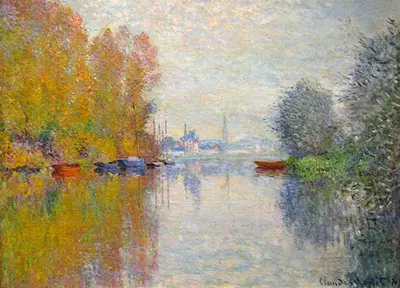It is currently held in a private collection. The scene is a depiction of the river Seine in Argenteuil. In 1871, Monet and his family had moved back to France from London and settled in the town of Argenteuil, just north of Paris. Monet was to become settled here and would stay for almost seven years.
The area was popular with tourists and locals and became a popular destination for artists. Some of Monet’s Impressionist colleagues, inspired by the scenery, headed to the town and many well-known art works were produced in Argenteuil around this time.
Edouard Manet, Pierre-Auguste Renoir and Alfred Sisley were among those who worked here. These artists converged in this time and place, often working alongside each other to bring the Impressionist movement to life. Impressionism is now arguably one of the most famous and well-loved movements in the history of art.
En Plein Air
Monet created many canvases of this area and of this particular view. It was around this time that he began to work en plein air - painting outdoors as opposed to working in the studio. This was an essential step in creating the distinct painting style associated with the Impressionist movement.
For these works and many others, Monet used his floating studio – a boat which he had equipped with all he might need to be able to work from the middle of the river. Fellow Impressionist and friend, Manet, painted Monet and his wife Camille on the boat in 1874, the boat depicted being the same that was used to produce works such as Autumn on the Seine at Argenteuil.
Autumnal Colour
In typical Monet style, the scene in Autumn on the Seine at Argenteuil has a luminous quality. Monet achieves this radiant effect by his use of colour, especially noticeable in the bright tones used in the centre of the image. This brightness of the sky is perfectly reflected in the river and the seasonal colours of the trees form a golden bank to the edge of the Seine.
This is crisply reflected in the water to form a curtain filling the whole side of the painting. The colours on the other side of the river are tonally opposite to the strong yellows and browns, forming a cooler frame. These blues are picked out in the small boats, contrasting well with the gold.
The use of these colours and the dabbed brushstrokes characteristic of Monet, combine to produce an atmospheric image. As with most of Monet’s outdoor works the colours used in this painting leave the viewer in no doubt as to the time of year. The weather, too, is tangible and the observer can easily visualise being in Argenteuil on a sunny autumn day. It is almost possible to imagine the sensation of swaying slightly, as the studio boat bobs in the river current.


